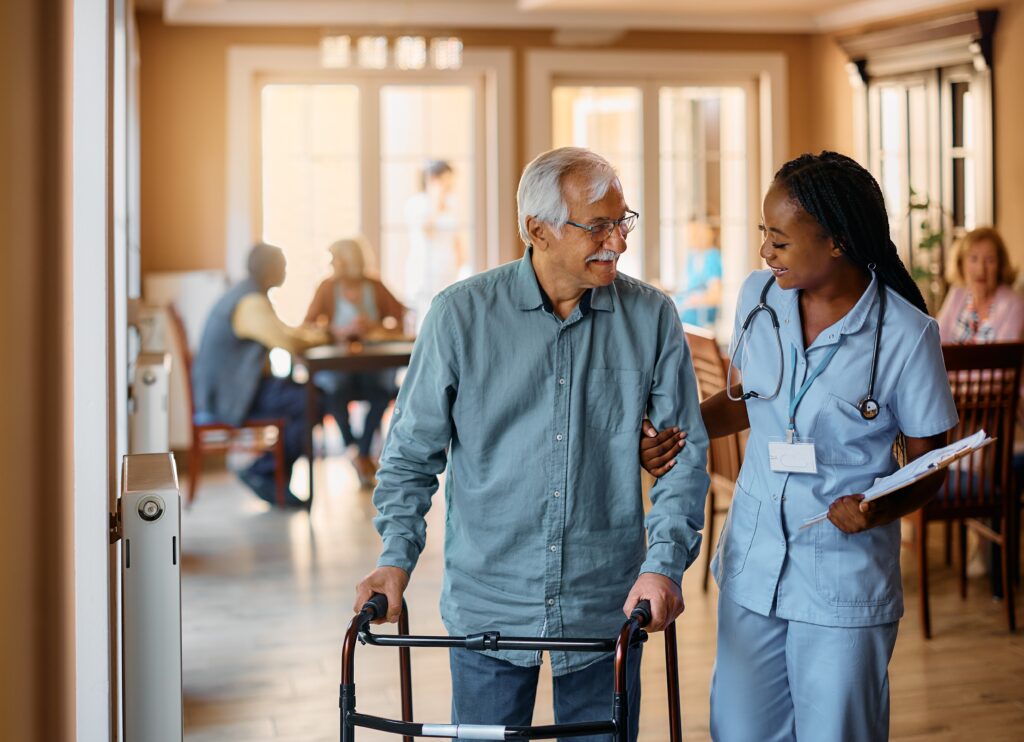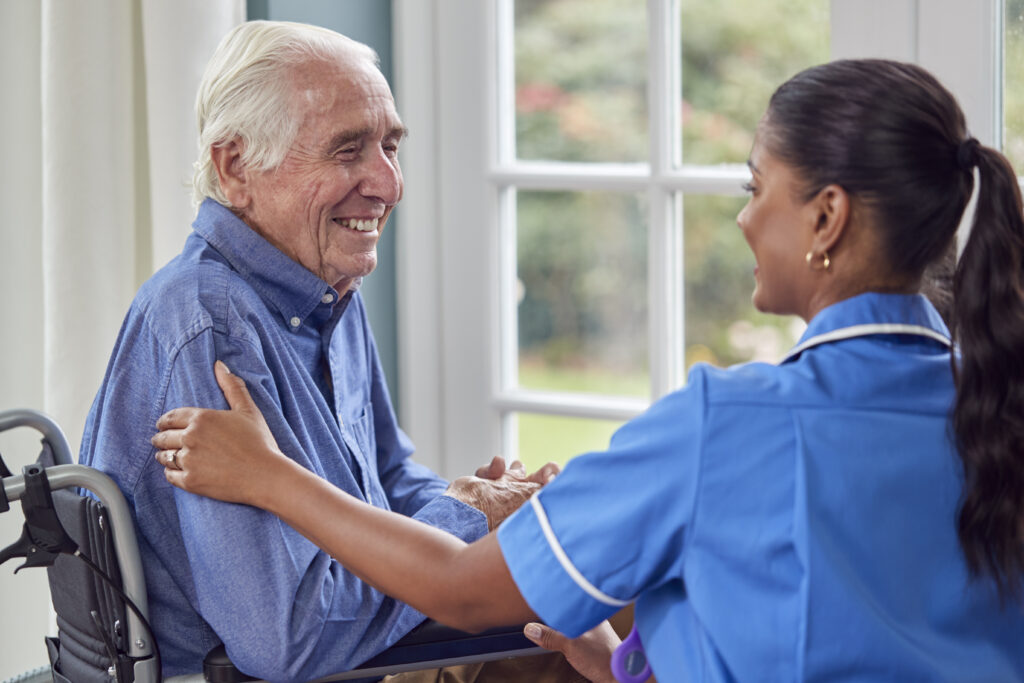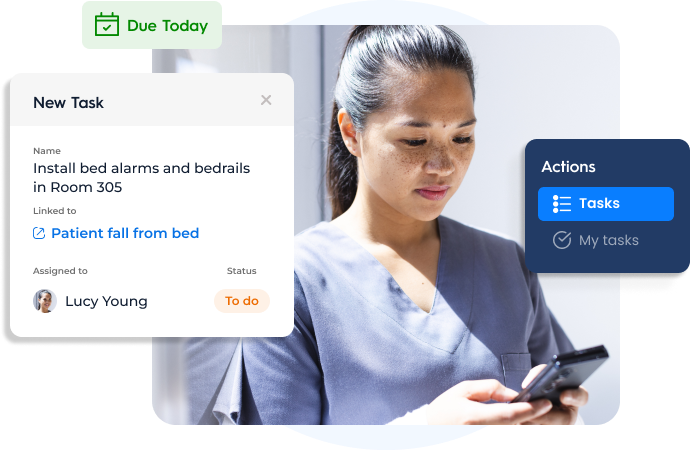Ensuring the health and safety of care home residents requires constant attention and the right knowledge.
With risks such as falls and medication errors common in these settings, knowing how to prevent them is key.
This article breaks down care home safety, from understanding the regulations and common incidents to implementing preventative strategies.
Care Home Health and Safety Regulations
Care homes operate under essential regulations to ensure resident safety and well-being.
The Health and Safety at Work Act 1974 establishes the fundamental duty of care towards both employees and residents, mandating a safe working and living environment.
The Management of Health and Safety at Work Regulations 1999 require employers, including care homes, to actively assess and manage risks to prevent incidents.
The Care Act 2014 sets out the responsibilities of local authorities, ensuring that individuals receive personal care that meets their needs, is safe, and protects their rights.
The Provision and Use of Work Equipment Regulations 1998 (PUWER) ensures that all equipment in care homes is safe, properly maintained, and correctly operated.
The Care Quality Commission (CQC) plays a crucial role in monitoring these practices, ensuring care homes adhere to national safety and quality standards through regular inspections.
Together, these measures form a comprehensive system aimed at safeguarding the health and safety of care home residents.
Common Accidents and Incidents in Care Homes

The NHS National Patient Safety Incident Reports reveal a significant number of incidents in the ‘community nursing’ category, which includes care homes.
With 285,941 incidents reported in 2021-22, this area ranks as the third highest for incidents among all care settings in England.
This highlights an urgent need for better safety measures in these environments.
Certain accidents and incidents occur more frequently than others in care homes. These include:
Slips, trips, and falls
Medication errors
Burns from hot water or surfaces
Choking
Each category poses unique risks that require specific measures. Some of the most common incidents are shown below, with suggestions on how best to prevent them.
Slips, Trips, and Falls
Slips, trips, and falls are some of the most common safety incidents in care homes.
Causes include wet floors, clutter, poor lighting, and incorrect use of walking aids. These accidents can vary in severity but often affect a resident’s mobility and quality of life.
Care homes should implement regular safety audits to identify and rectify potential hazards. This includes ensuring spills are promptly cleaned up, walkways are kept clear of obstacles, and lighting is adequate in all areas.
Staff should be trained to help residents move safely, installing handrails, and providing non-slip footwear can also significantly reduce the risk of falls.
Medication Errors
Another significant incident in care homes is medication errors.
National reporting statistics show that 21,826 incidents involving medication errors were reported in England’s community nursing settings in 2021-22.
These errors include:
Giving the incorrect medication to a resident
Giving the wrong dose
Administering medication at the wrong time.
The consequences of such mistakes can be serious, potentially leading to adverse health outcomes for residents.
Preventing medication errors requires a comprehensive approach.
Implementing strict protocols for prescribing, dispensing, and administering medications is key.
This includes regular staff training on medication management, using technology to track and verify medications, and conducting periodic audits to ensure compliance with safety standards.
Care homes can significantly reduce the risk of medication errors by focusing on these areas.
Burns From Hot Water or Surfaces
Burn injuries, caused by hot water or surfaces, pose a real risk to care home residents.
These incidents can stem from everyday sources, such as overheated bath water, hot food, radiators, and exposed pipes.
Care home residents often face challenges like reduced mental capacity or sensory impairments. This can make it hard for them to quickly react to dangers.
Safety measures should include maximum temperature controls on water heaters, insulating hot pipes and using protective covers on radiators.
Regular safety checks to identify risks and protective measures are crucial for a safer environment, reducing the chance of burn-related accidents.
Choking
Choking is a serious risk, particularly for those who require assistance during meals.
This hazard can arise from food, but also from medications or small objects within reach.
Preventive measures include thorough assessments of residents’ swallowing capabilities and adapting meals to their specific needs.
Training staff in choking first aid and ensuring close supervision during meal times are also vital steps.
Additionally, keeping small objects out of easy reach can help minimise the risk of such an incident.
Strategies for Preventing Incidents in Care Homes

Ensuring the safety of care home residents is a multifaceted challenge that demands a comprehensive approach.
Beyond addressing specific common adverse events and their root causes, broader strategies are vital for creating a safer environment. Here’s how care homes can effectively prevent incidents:
Staff Training
A well-trained staff is crucial for preventing safety incidents in care homes.
Staff training should cover proper use of equipment, medication management, and adherence to care protocols.
Ongoing education is necessary to keep staff skills sharp and up to date, equipping them to handle a range of potential challenges.
Risk Assessments
Regular risk assessments are essential in identifying and mitigating potential hazards.
These assessments should cover everything from the physical environment to daily routines, helping spot and fix potential dangers before they lead to incidents.
Emergency Response Plans
Having clear, well-practised emergency response plans for various scenarios is crucial.
Regular drills and training sessions for emergency response can help both staff and residents know exactly what to do in case of a fire, medical emergency, or natural disaster.
A swift, coordinated response can save lives.
Environmental Design and Modification
The design and layout of care facilities play a significant role in preventing accidents.
Modifications could include installing better lighting, non-slip flooring, and making spaces more accessible to those with mobility issues.
Thoughtful design can drastically reduce the risk of falls and other accidents.
Safety-Focused Culture
Cultivating a culture of safety means creating an environment where every care staff member feels responsible for the well-being of residents.
Encouraging staff to report potential hazards and safety incidents without fear of backlash can greatly enhance safety in care homes.
This involves open communication, regular feedback, and positive reinforcement for safety-conscious behaviour.
Leveraging Technology
Technology can greatly improve safety in care homes.
Tools like incident reporting software can streamline the process of accountability and learning, making it easier to report incidents.
Investing in technology not only improves immediate response to incidents but also aids in long-term prevention strategies.
Digital incident reporting tools allow for the efficient tracking and analysis of incidents, helping to identify patterns and trends that may indicate underlying issues.
Learning why incidents occur can help care homes make improvements to prevent them from happening again.
Vatix’s incident reporting platform can streamline incident management in care home environments with the following key features:
Real-time reporting of incidents via web, mobile app, or QR code, enabling staff to quickly log incidents as they happen.
Immediate alerts sent to appropriate staff members upon submission of an incident report, ensuring a rapid response to incidents.
Easy assignment and monitoring of corrective actions and deadlines in response to patient safety incidents.
Customisable report templates that make it easy to capture detailed and relevant information for each incident.
Comprehensive analytics dashboards for insights into key incident metrics.
A central database for storing all incident-related details, from photos to witness statements, in one place for easy access.

By focusing on these strategies, care homes can significantly reduce the risk of incidents and ensure a safer, more comfortable environment for residents.
Summary
Improving safety in care homes is not a one-off task, but a team effort that requires ongoing attention and constant improvement.
Recognising common incidents is crucial for implementing effective prevention strategies.
By understanding and addressing the root causes of these incidents, care homes can foster a safer environment, significantly improving the well-being of residents.
For further information on how our incident reporting software can enhance safety in your care home, talk to our sales team here.


